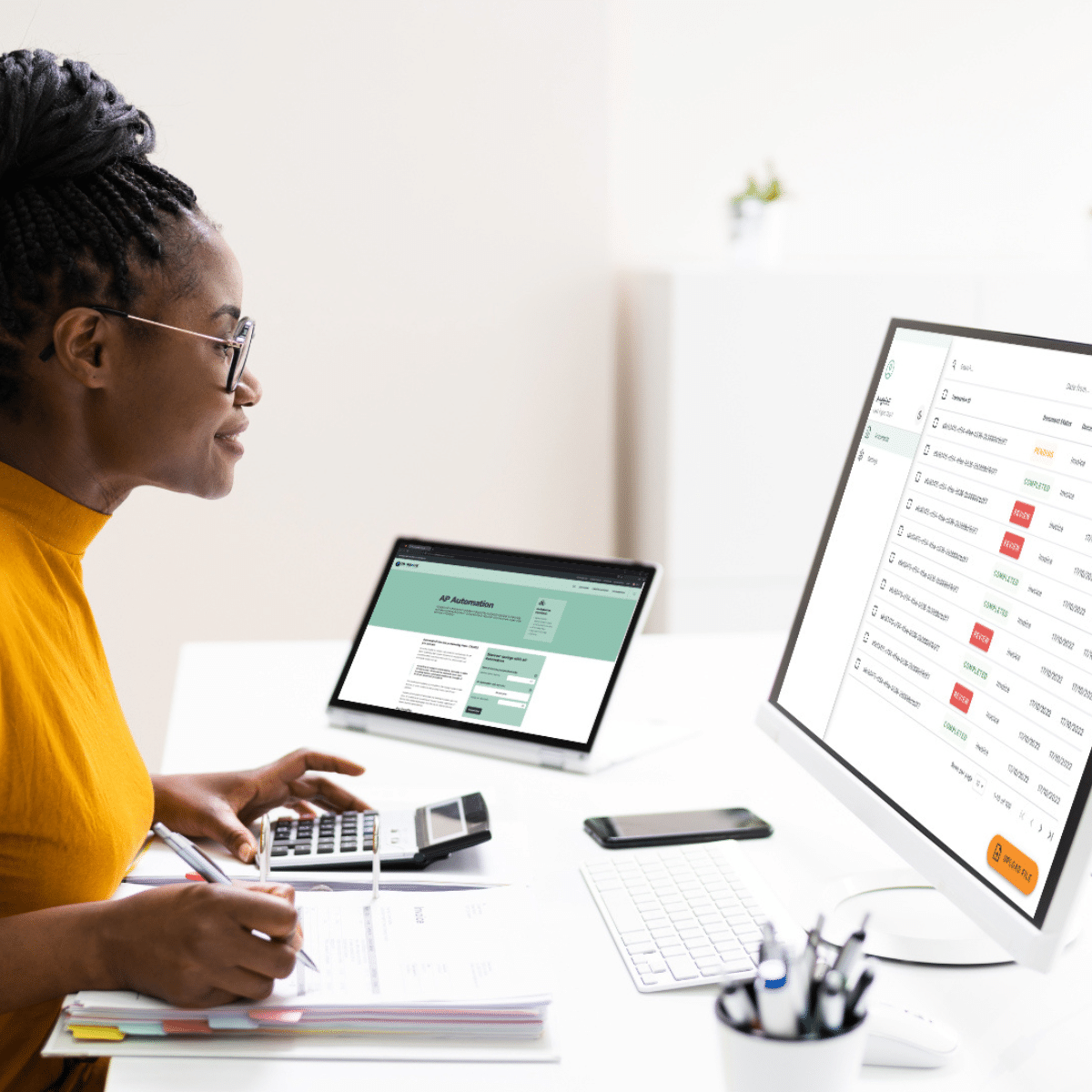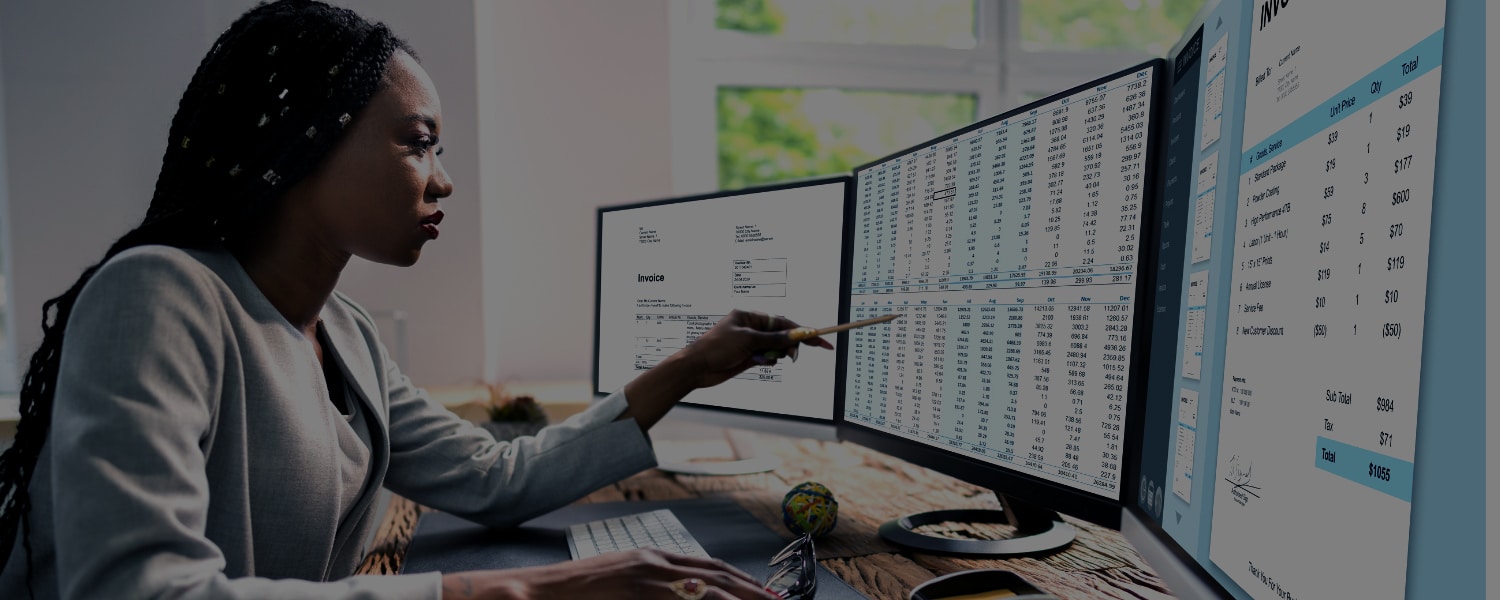
Businesses are turning to electronic invoice processing as they explore ways to improve efficiency and ROI in their finance departments.
These automated systems significantly reduce costs compared with paper or digital image-based systems. The impact on the bottom line is a key motivator for many Finance Directors, however, there are several other benefits to digital transformation in the Finance department.
Calculate the ROI of digital transformation for your Finance department
Use our calculator tools to demonstrate the costs vs. savings of automation solutions for both AP and AR processes within the finance department

In this blog, we provide the key reasons why businesses need to consider switching to electronic invoice processing, including:
Efficiency
One of the key reasons why businesses switch to electronic invoice processing is the transformation in departmental efficiency.
According to Swiss global market analyst Billentis*, organisations globally exchange approximately 550 billion bills and invoices annually, with an almost equal split between goods and services. As Finance Director, you inevitably have a resource issue if your department relies on manual processing, particularly if you’re processing hundreds or even thousands of invoices monthly.
This approach to invoice processing is extremely inefficient, as teams are burdened with the keying and rekeying of invoice data between different systems. This comes in addition to the distribution, document consolidation/matching, as well as validation and sign-off processes.
According to research conducted by Transalis, it takes AP teams over 10 minutes to manually input each incoming invoice, costing businesses an average of £1.95 per document processed
This is without considering the everyday frustrations of document processing errors. These are an inevitable consequence of manual processing, putting greater strain on turnaround times.
Savings are generated through faster processing, fewer errors, and healthier cashflow. Electronic invoice processing eliminates this functionality. Solutions available in the market can support both the Accounts Payable and Accounts Receivable functions. With these solutions in place, businesses can achieve more cost-efficient data flows and digitise invoice storage for auditing and reporting.
For example, an AP automation solution will likely focus on digitising and standardising inbound documents to directly integrate with the payments system. An AR automation solution should provide compliance functionality and automatically issue invoices in various eInvoice formats, as required by the receiving party. Thus removing the most laborious tasks for the finance team to manage on a manual basis.
In terms of ROI, automated invoicing systems can offer on average 60-80% savings over manual processing. At Transalis, we have an ROI calculator for our AP Automation solution, so businesses can get visibility on their cost-saving opportunity.
The growing need for compliance
In recent years, multi-national businesses have increasingly needed to contend with international tax reporting mandates.
Global tax authorities are introducing new regulation to close their respective VAT gaps. For example, the European Commission** reported a discrepancy of 61 billion euros across all member states in 2021. Electronic invoice processing can combat this issue, and help facilitate a mandate for Continuous Transaction Controls (CTCs).
Legislation and requirements can vary, meaning organisations might need to follow a range of eInvoicing protocols. However, governing bodies and service providers are increasingly working together to enable interoperability. This is especially the case for countries and regions across the European Union, where they are making way for an EU-wide standard.
As touched on in the previous section of this blog, AR automation solutions can support businesses with compliance mandates. Whilst the growing need for compliance with tax reporting regulations means incurring costs to facilitate it, Finance Directors can implement strategies to minimise the financial impact on the business. Savings produced by harnessing an AP automation solution in tandem will offset the additional costs of compliance.
How electronic invoice processing supports scalability
Looking ahead, Finance Directors need to consider the implications of existing processes on the business in years to come.
When it comes to achieving growth, digital transformation is key. Inefficient and costly finance functions will have a direct impact on business performance and can stifle scalability. Therefore, investing in automation solutions will help future-proof the business.
Transalis has experience in supporting businesses with their expansion plans, implementing the solutions necessary for them to enter new territories and cut costs. See examples of some of our client projects below:
AS Watson Group
AS Watson Group selected Transalis to maximise its European supply chain efficiency. The required solution was needed to manage its entire B2B electronic enablement, including invoice processing. This consisted of:
3,000 suppliers
16 European countries – such as France, Italy, Netherlands, Poland, Romania, Spain, Switzerland, and Turkey
8 major high-street retailers (4,000+ stores) – including Superdrug, Savers, The Perfume Shop, Kruidvat, Trekpleister, Drogas, Marionnaud and ICI Paris XL
A.G. Barr
Thanks to the help of Transalis, AG Barr achieved significant ROI after implementing a paper-to-digital solution, similar to AP Automation.
In summary, they realised:
£15,000 annual saving on processes with ten priority customers
5% improvement offsets the investment in the project
572 man-hours saved annually for higher-value operations
“We prioritised ten customers, averaging 50 orders a day. Based on our non-EDI-user error rates, this led to 367 credit notes a year. Addressing these took 11 hours a week of non-value time. Moving these ten customers to the Transalis solution would potentially save £9,000 through the avoidance of credit notes, with up to £6,000 on other associated savings. If we reduced the amount of credit notes by just 5% it would pay for this investment in Paper-to-Digital."
Want to see how our eInvoicing solutions can support your business? Take a look at our products and their interactive calculator tools below.
eInvoice Software
If you want to switch from manual to electronic invoice processing, take a look at our eInvoice product bundles or arrange a meeting with a member of our team. You can also contact us via 0845 123 3746 (UK callers) or +44 1978 369 343 (for international callers), or email sales@transalis.com to discuss your requirements.
References:
*Billentis (2019). The e-Invoicing journey 2019 to 2025
**European Commission (2023). The VAT Gap Report








